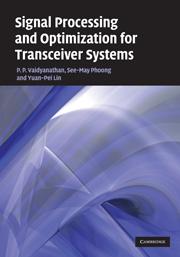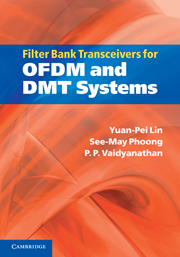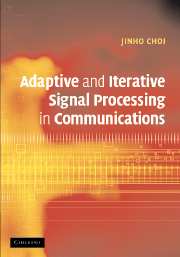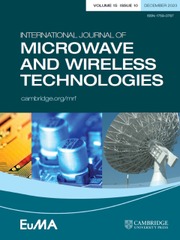Signal Processing and Optimization for Transceiver Systems
Presenting the first complete treatment of MIMO transceiver optimization, this self-contained book provides all the mathematical information needed to understand transceiver optimization in a single volume. It begins with a review of digital communication fundamentals, and then moves on to a detailed study of joint transceiver optimization, starting from simple single-input single-output channels all the way to minimum bit error rate transceivers for MIMO channels. Crucial background material is covered, such as Schur convex functions, matrix calculus, and constrained optimization, together with eight appendices providing further background material on topics such as matrix theory, random processes, and sampling theory. A final ninth appendix provides a grand summary of all the optimization results. With 360 illustrations, over 70 worked examples, and numerous summary tables provided to aid understanding of key concepts, this book is ideal for graduate students, practitioners, and researchers in the fields of communications and signal processing.
- Presents the first complete treatment of MIMO transceiver optimization
- Provides, in a single volume, all the key background material needed
- Includes plenty of examples, illustrations, discussions and summary tables to aid understanding of complex ideas
Product details
March 2010Hardback
9780521760799
874 pages
254 × 180 × 44 mm
1.85kg
360 b/w illus. 20 tables
Available
Table of Contents
- Part I. Communication Fundamentals:
- 1. Introduction
- 2. Review of basic ideas from digital communication
- 3. Digital communication systems and filter banks
- 4. Discrete time representations
- 5. Classical transceiver techniques
- 6. Channel capacity
- 7. Channel equalization with transmitter redundancy
- 8. The lazy precoder with a zero-forcing equalizer
- Part II. Transceiver Optimization:
- 9. History and outline
- 10. Single-input single-output transceiver optimization
- 11. Optimal transceivers for diagonal channels
- 12. MMSE transceivers with zero-forcing equalizers
- 13. MMSE transceivers without zero forcing
- 14. Bit allocation and power minimization
- 15. Transceivers with orthonormal precoders
- 16. Minimization of error probability in transceivers
- 17. Optimization of cyclic prefix transceivers
- 18. Optimization of zero padded systems
- 19. Transceivers with decision feedback equalizers
- Part III. Mathematical Background:
- 20. Matrix differentiation
- 21. Convexity, Schur convexity and majorization theory
- 22. Optimization with equality and inequality constraints
- Part IV. Appendices: A. Inner products, norms, and inequalities
- B. Matrices: a brief overview
- C. Singular value decomposition
- D. Properties of pseudocirculant matrices
- E. Random processes
- F. Wiener filtering
- G. Review of concepts from sampling theory
- H. Euclid's algorithm
- I. Transceiver optimization
- Summary and tables
- Glossary and acronyms
- Bibliography.







